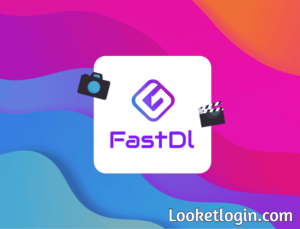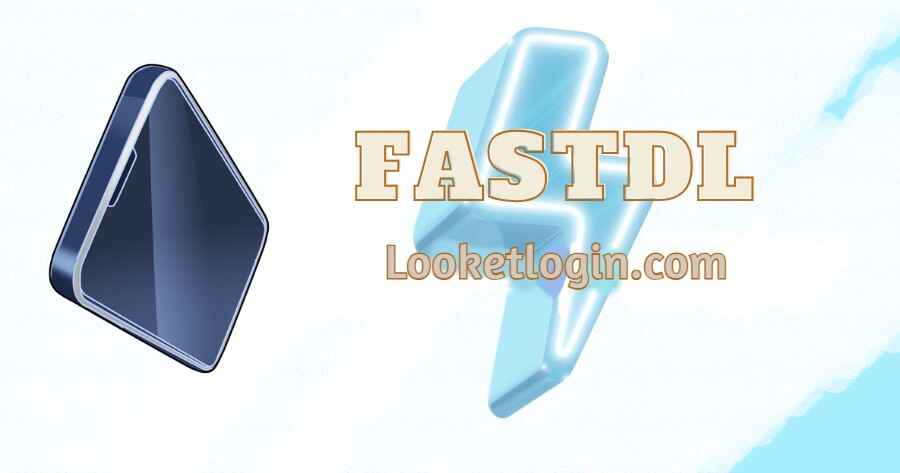In today’s fast-paced digital world, everyone wants quick and easy access to files. From software and games to documents and media, file downloads play a huge role in how we interact online.
One method that has emerged as a solution for fast downloads is called “FastDL.” Whether you are a gamer, a server administrator, or just curious, this guide will dive into the details of FastDL, its uses, and why it’s important.
What is FastDL?
FastDL, short for “Fast Download,” is a method used to speed up file downloads. Traditionally, file downloads are slow because files are hosted on the same server as the application or website.
This can cause delays, especially during high traffic. FastDL solves this by hosting files on a separate, optimized server.
This server is designed to handle large downloads quickly. By separating file hosting from the primary application server, FastDL ensures that files are downloaded quickly and efficiently.
Why Use FastDL?
Speed is critical. In a world where users expect instant access, a slow download can lead to frustration and lost interest. FastDL addresses this need by speeding up the download process.
FastDL is popular among game servers. Gamers need to download maps, skins, and other resources quickly. A slow download can ruin the experience. FastDL prevents this by delivering files swiftly.
It also benefits websites. If your site has downloadable content, FastDL ensures users get files quickly, enhancing their experience and reducing bounce rates.
How Does FastDL Work?

FastDL is simple yet effective. It uses a separate server, known as a content delivery network (CDN), to host files.
When a user requests a download, they are redirected to the CDN server, which sends the file directly.
This separation ensures that the main server doesn’t slow down. The CDN server is optimized for file downloads, often using high-speed connections and caching to deliver files faster.
The main steps include:
- Hosting files on a CDN server.
- Configure your application to use the FastDL server.
- Redirecting download requests to the CDN.
Benefits of Using FastDL
FastDL has numerous benefits. Let’s explore some of them.
- Improved Speed: FastDL significantly reduces download times. Files hosted on optimized servers load faster, even during peak hours.
- Reduced Load on Main Server: By offloading downloads to a separate server, the main server can focus on other tasks. This is crucial for high-traffic sites and applications.
- Enhanced User Experience: A quick download improves user satisfaction. This is especially important for games, where delays can be frustrating.
- Cost-Effective: Using a CDN for FastDL is often more affordable than upgrading your main server. Many CDNs offer flexible pricing.
- Scalability: FastDL makes it easier to scale. As your user base grows, the CDN can handle increased download requests without impacting performance.
FastDL for Gaming Servers
FastDL is commonly used in gaming. Many games require players to download maps, skins, and other assets. FastDL ensures that these files download quickly, keeping players engaged.
To set up FastDL for a gaming server, follow these steps:
- Host the required files on a FastDL server.
- Configure the game server to point to the FastDL server.
- Enable automatic redirection for download requests.
This setup is especially popular for games like Counter-Strike and Garry’s Mod. Without FastDL, players would have to wait longer for in-game content, which can lead to high abandonment rates.
FastDL for Websites and Businesses
FastDL isn’t limited to gaming. It’s also valuable for businesses. Companies with downloadable resources, like PDFs, software, or media, can benefit from FastDL.
With FastDL, files download faster, improving the user experience. A good experience increases the likelihood of users returning to your site. It also reduces bounce rates, which can positively impact SEO.
Setting Up FastDL
Setting up FastDL may seem complex, but it’s manageable with the right tools. Follow these steps:
- Choose a CDN Provider: Popular CDN providers include Cloudflare, Akamai, and Amazon CloudFront. Choose one that meets your needs and budget.
- Upload Your Files: After choosing a CDN, upload the files you want to make available for download. The CDN will store these files across its network.
- Configure Your Application or Game Server: Point your application or game server to the CDN. This step varies depending on your platform, so consult documentation if needed.
- Test Your Setup: Ensure that downloads are working smoothly. Test from multiple locations to confirm that the setup is functioning as expected.
- Optimize File Sizes: Smaller files download faster. Consider compressing files where possible to improve speed further.
Common Challenges with FastDL

While FastDL is highly effective, there are a few challenges to consider:
- Compatibility Issues: Not all platforms or applications support FastDL. Check compatibility before implementation.
- Cost of CDN: Some CDN providers can be expensive, especially if you have high download volumes. Compare options to find a cost-effective solution.
- Security: FastDL increases access to files. Ensure that sensitive files are secure and that the CDN has adequate protection measures.
- Complex Setup: For beginners, setting up FastDL can be challenging. However, with guides and tutorials, it becomes more manageable.
Best Practices for Using FastDL
To make the most of FastDL, follow these best practices:
- Optimize File Sizes: Smaller files download faster, reducing server load and improving user experience. Compress files wherever possible.
- Monitor Performance: Track download times and server performance. Many CDNs offer analytics, which can help you understand how your files are performing.
- Secure Your Files: Protect sensitive files with proper permissions. Many CDNs offer security features like IP restrictions.
- Regularly Update Files: Ensure that your CDN has the latest version of each file. Regular updates prevent outdated downloads.
- Test Across Regions: FastDL speeds may vary by location. Test from different regions to ensure a consistent experience globally.
FastDL Alternatives
While FastDL is effective, there are alternatives to consider:
- Direct Downloads: Direct downloads involve hosting files on the main server. This is simpler but may slow down during high traffic.
- Peer-to-Peer (P2P): P2P allows users to download files from each other. While not as fast as FastDL, P2P can reduce server load.
- FTP: FTP (File Transfer Protocol) is another option. However, FTP doesn’t offer the same speed and convenience as FastDL.
- Third-Party File Hosts: Platforms like Dropbox and Google Drive can host files, but they lack the performance of a dedicated CDN.
Is FastDL Right for You?
FastDL is ideal for anyone who requires fast, reliable downloads. If you manage a gaming server, website, or business with downloadable content, FastDL can greatly improve performance.
Consider your specific needs. If speed, scalability, and user experience are top priorities, FastDL is a great choice. However, if you have a low volume of downloads, other methods might be more cost-effective.
Conclusion
FastDL offers an effective solution for faster file downloads. By hosting files on a dedicated server, FastDL speeds up download times, reduces load on the main server, and improves user experience.
Whether you’re a gamer, a business, or a website owner, FastDL can benefit you.
With a few simple steps, you can set up FastDL and start offering your users a smoother download experience.
As digital expectations continue to rise, FastDL provides a way to keep up, ensuring that users get the files they need without delay.





